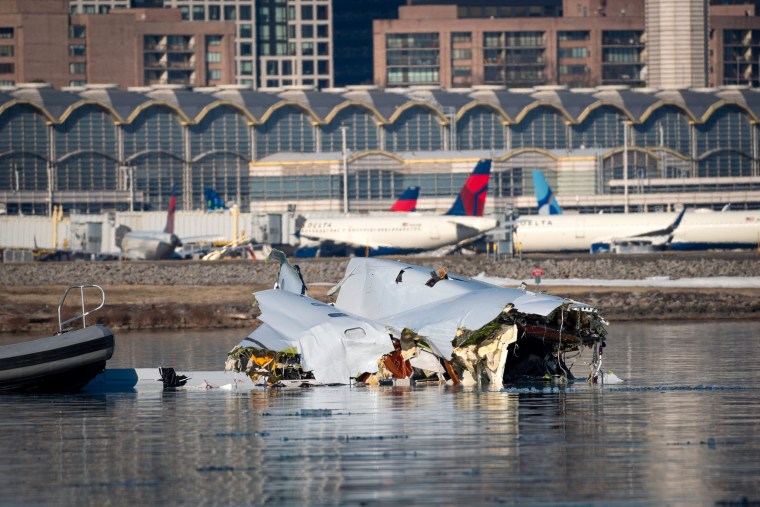
Local and state officials have pledged to recover all 67 of the victims who perished when Flight 5432 crashed into a military helicopter last Wednesday, and the difficult task of retrieving the wrecked aircraft from the Potomac River is scheduled to start on Monday.
The remains of 55 people have been found thus far. At a press conference on Sunday, D.C. Fire and EMS Chief John Donnelly declared, “We’re going to recover everyone.”
“If we knew where they were, though, we would already have them out, so we have some work to do as the salvage operation goes on, and we will absolutely stay here and search until such point as we have everybody,” he stated. Near-zero vision in the murky waters has presented challenges for recovery crews.
Over the course of three days, the Baltimore District of the U.S. Army Corps of Engineers intends to gradually remove the jet’s remnants from the river.
According to the army’s announcement, the operation will make use of two surface-supplied diving systems, a crane barge, deck barges, and dive boats.
The National Transportation Safety Board will move the debris to a hangar so they can continue their investigation into what caused the incident.
The remains of the Black Hawk chopper will thereafter be the focus of the recovery crews. The operation’s “large lifts” phase should be completed by Saturday, while other debris removal should continue until at least February 12. When a body is found, this work will be automatically stopped.
Baltimore District Commander Col. Francis Pera praised the extraordinary amount of coordination that took place both on the Potomac and behind the scenes. Our top priorities remain the safety of our crews and finding the missing so that their families and loved ones can get closure. We have not and will not lose sight of these goals.
However, weather, tides, and lift availability all affect how long it takes to recover.
